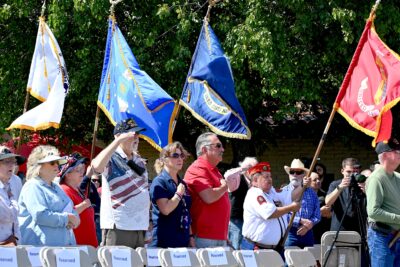Jerry Schwartz was born Memorial Day, May 30, 1934 in Brooklyn, N.Y. and he attended Thomas Jefferson High School graduating June 1952. Straight out of high school, Jerry attended the Academy of Aeronautics in Queens, New York, but on Sept. 20, 1953, Jerry received his very own Uncle Sam “Greeting Letter” inviting him to join the US Army.
Jerry and eleven of his buddies who also received their draft notices went to Fort Dix, New Jersey, for basic training. Jerry has never forgotten how miserable he and his buddies were during his coldest winter ever when his unit bivouacked on the plains at Fort Dix.
Jerry’s interest in mechanics led him to extend his service by one year to attend helicopter school at Fort Eustis, Virginia. During the Korean War, the use of helicopters rapidly became a vital element of our military’s arsenal of weaponry and for medical evacuations. Following Jerry’s 30 week helicopter training, he went to Fort Lewis, Washington, and on to Inchon, South Korea in May 1955 serving in the 13th Helicopter Company; the only US Army helicopter unit in South Korea at that time.
Although the first extensive use of helicopters in combat was handicapped by the limited capabilities of the early aircraft, the choppers were widely hailed as tools that would be vital in future conflicts. On the basis of his experiences in Korea, Eighth Army commander Lt. Gen. Maxwell Taylor said: “The cargo helicopter, employed in mass, can extend the tactical mobility of the Army far beyond its normal capability.” Clearly, the Huey Helicopter later became synonymous with the Vietnam War.
Jerry served as a crew member on an H-19 Sikorsky Helicopter and his fondest memory was transporting members of Bob Hope’s USO Show throughout South Korea to entertain our troops. However, his saddest memory occurred on Feb. 22, 1957 when a C-124 Globemaster cargo plane, with 149 soldiers and a 10-man Air Force crew aboard, crashed on a mud bar in the Han River, which was choked with floating ice. The aircraft’s No. 3 engine lost a blade just after wheels were raised and a blade penetrated the fuselage, severing both aileron and rudder cables and killing four passengers. Its top passenger deck collapsed on impact, crushing some passengers and injuring others. The Han River’s rising tide required survivors to cling to ice flows in the river.
Aircraft Commander Cartwright reduced power on both running engines and with the DMZ just two miles ahead, that mud bar was his only option to save crew and passengers. Had they crossed the DMZ, North Korea would have shot down the aircraft. This is known as the fourth worst accident at the time.
Jerry’s helicopter unit was immediately summoned to save as many men as possible, but it was a desperate race against time and the elements. The tide was rising and it became necessary for survivors to scramble up ropes to hovering helicopters. To Jerry and his fellow crew members’ great credit, almost all of those troopers lives were saved, however there were 21 fatalities.
Jerry later returned to the US and was discharged as Specialist 4th Class in November 1957. Following his military service, he traveled to Southern California and attended Northrop’s Aeronautics School in Inglewood for one year. Then, he returned to New York where he became a door-to-door vacuum cleaner salesman. Several months later, he moved to Culver City where he opened up a vacuum cleaner business which he owned and operated for 30 years.
Jerry married Raquel Muchnik on Sept. 3, 1960 and they moved to Northridge where they lived for the next 44 years. Along the way they had two children and four grandchildren. Jerry and Raquel have lived in Valencia since 2005.
In Jerry’s retirement years, he enjoys assisting veterans and is active with the “Disabled American Veterans” (DAV) organization. Jerry said his greatest dream is for Santa Clarita to create a Veterans Museum near Newhall’s Veterans Historical Plaza. This museum would be dedicated to all veterans and especially to the memory of Duane Harte, who passed away last November at age 68.
Bill Reynolds is one of the “Boys of ’67,” Charlie Company, 4th/47th, 9th Infantry Division and is the director of Veterans Affairs for The Signal.













